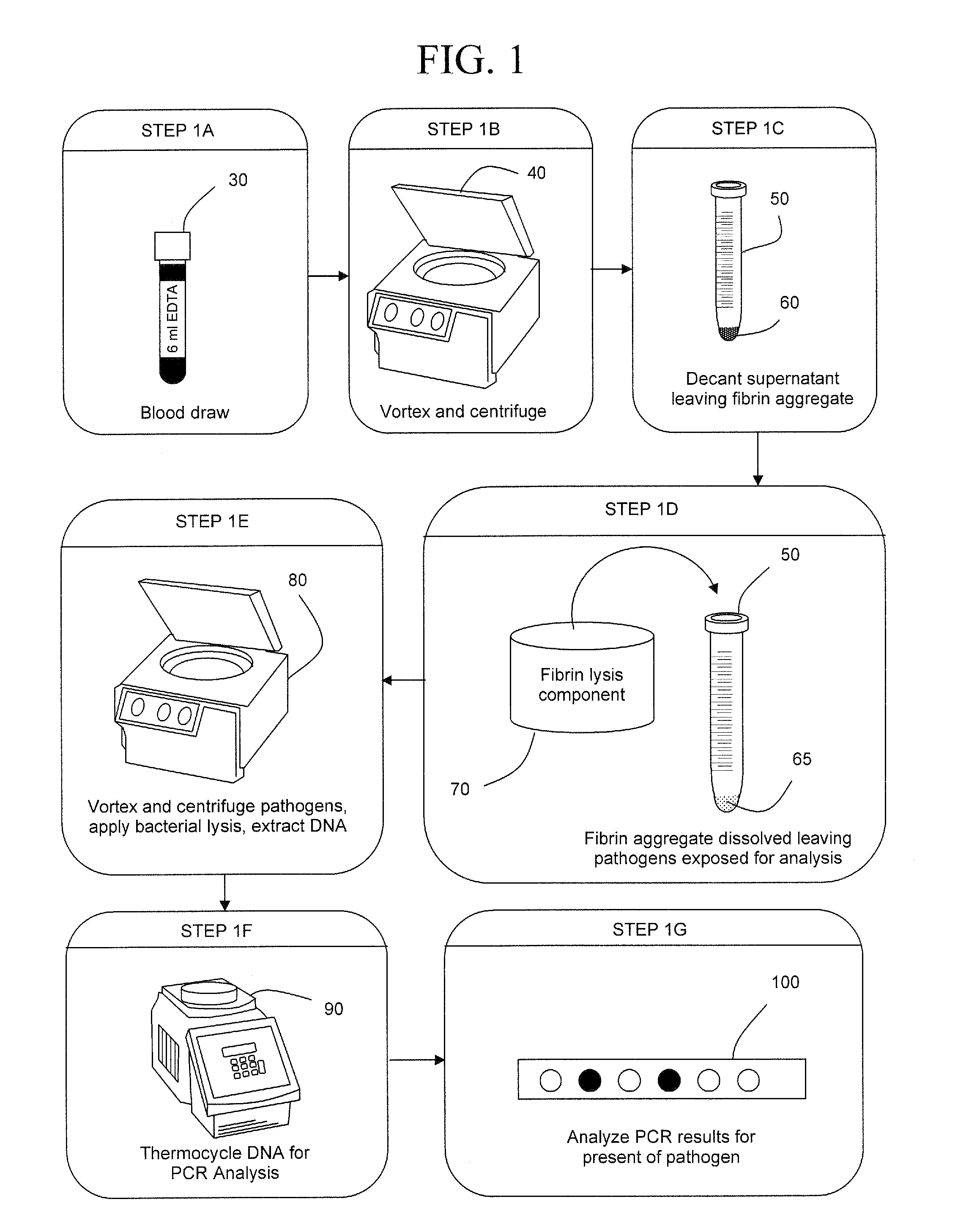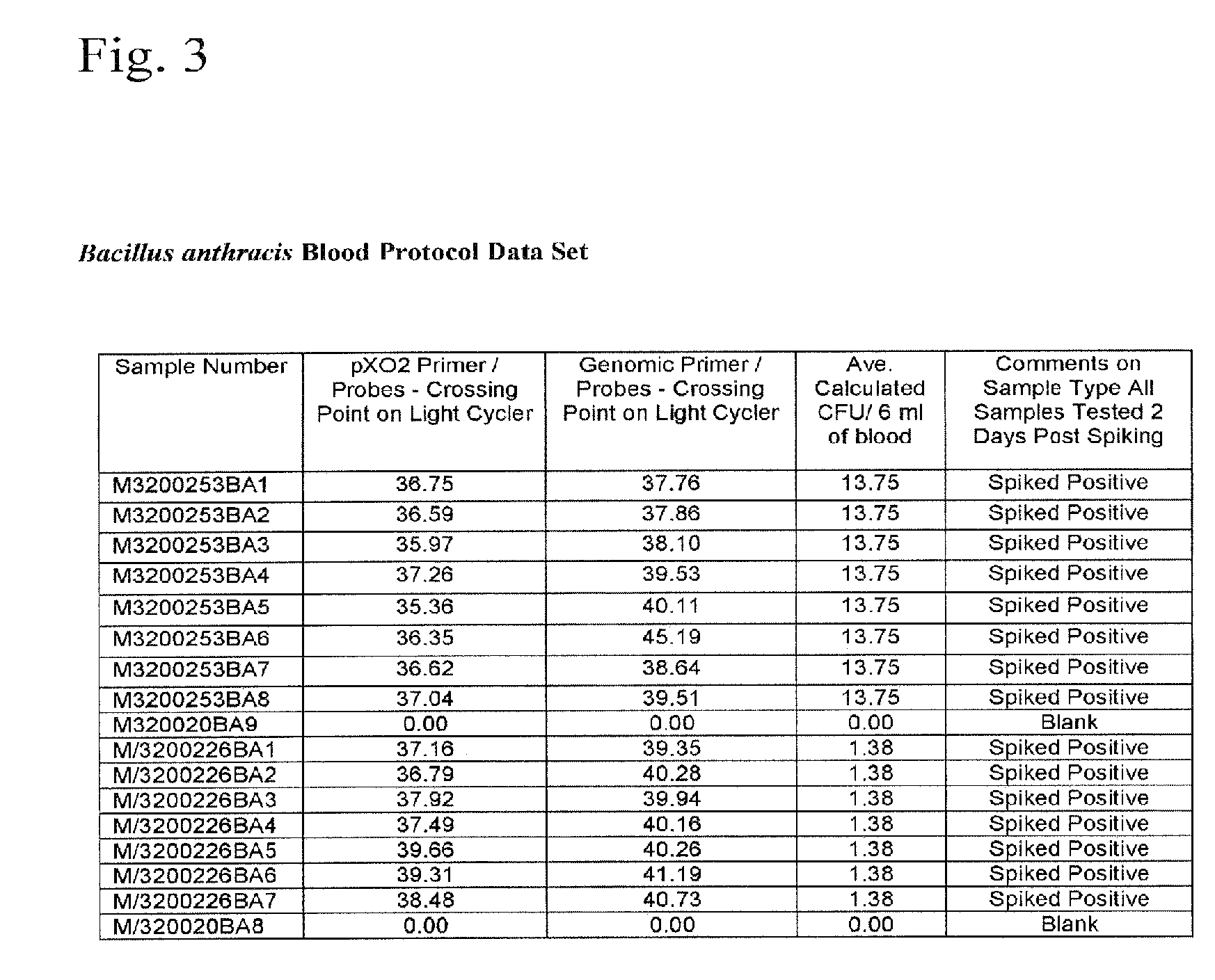Early Detection of Pathogens in Blood
a pathogen detection and pathogen technology, applied in the field of blood infection detection, can solve the problem that the captured pathogens are substantially hidden from analysis, and achieve the effect of rapid identification of the captured pathogens
- Summary
- Abstract
- Description
- Claims
- Application Information
AI Technical Summary
Benefits of technology
Problems solved by technology
Method used
Image
Examples
Embodiment Construction
[0044]In FIG. 1, a blood draw 30 is performed on a patient. A solution of PBS, pH 7.4 and 1.2% TRITON X-100 is added, the blood is vortexed and centrifuged 40 creating pellet 60 in a 15 ml tube 50. Preferably, resins, metal hydroxides, and / or nano materials may be added with the PBS / TRITON X-100 solution to capture particles such as bacteria, virus, fungi, cancerous cells, prions, toxins and the like to contribute greater density to these particles. The increase in particle density allows lower speeds to run during centrifugation.
[0045]The supernatant is decanted leaving a fibrin aggregate. A fibrin lysis component 70 is added to tube 50 dissolving the fibrin aggregate and leaving pathogens 65 exposed for analysis. Pathogens 65 are vortexed, centrifuged, and subject to lysis to extract the pathogen DNA. The DNA is then replicated 90 and analyzed 100 for the identity of the suspected pathogen.
[0046]In an alternative embodiment of the invention, a device would be used to obviate the n...
PUM
| Property | Measurement | Unit |
|---|---|---|
| temperature | aaaaa | aaaaa |
| pH | aaaaa | aaaaa |
| pH | aaaaa | aaaaa |
Abstract
Description
Claims
Application Information
 Login to View More
Login to View More - R&D
- Intellectual Property
- Life Sciences
- Materials
- Tech Scout
- Unparalleled Data Quality
- Higher Quality Content
- 60% Fewer Hallucinations
Browse by: Latest US Patents, China's latest patents, Technical Efficacy Thesaurus, Application Domain, Technology Topic, Popular Technical Reports.
© 2025 PatSnap. All rights reserved.Legal|Privacy policy|Modern Slavery Act Transparency Statement|Sitemap|About US| Contact US: help@patsnap.com



